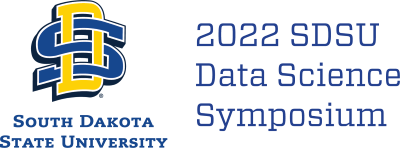Session 09: Advances in Explanation-friendly Scorecard Technology
Presentation Type
Oral
Student
No
Track
Methodology
Abstract
Traditional scorecards are generalized additive models with step functions over predictors as component functions. While these models are flexible to capture nonlinear effects and easy to explain (explanation can be enhanced by imposing shape constraints on the component functions), the discontinuous nature of step functions can be unnatural for some continuous numeric predictors and hence harder to explain. This applies to use cases in business analytics such as credit scoring and perhaps even more so to certain health or behavioral sciences applications.
We introduce smoother scorecards which generalize the step functions by higher-order B-splines to get around discontinuities. The models can be trained to maximize the Divergence objective (a measure of separation between the score distributions of Positives and Negatives) subject to score engineering constraints such as global or piecewise monotonicity. We also discuss how predictive performance and explanation can be improved by adding a roughness penalty term to the objective in order to smooth wiggly splines. The presentation will explain concepts and present case study results from credit risk scoring and/or healthcare to back up our claims and to illustrate the power and elegance of an innovative generalization to traditional scorecards.
Start Date
2-8-2022 2:30 PM
End Date
2-8-2022 3:25 PM
Session 09: Advances in Explanation-friendly Scorecard Technology
Pasque 255
Traditional scorecards are generalized additive models with step functions over predictors as component functions. While these models are flexible to capture nonlinear effects and easy to explain (explanation can be enhanced by imposing shape constraints on the component functions), the discontinuous nature of step functions can be unnatural for some continuous numeric predictors and hence harder to explain. This applies to use cases in business analytics such as credit scoring and perhaps even more so to certain health or behavioral sciences applications.
We introduce smoother scorecards which generalize the step functions by higher-order B-splines to get around discontinuities. The models can be trained to maximize the Divergence objective (a measure of separation between the score distributions of Positives and Negatives) subject to score engineering constraints such as global or piecewise monotonicity. We also discuss how predictive performance and explanation can be improved by adding a roughness penalty term to the objective in order to smooth wiggly splines. The presentation will explain concepts and present case study results from credit risk scoring and/or healthcare to back up our claims and to illustrate the power and elegance of an innovative generalization to traditional scorecards.

